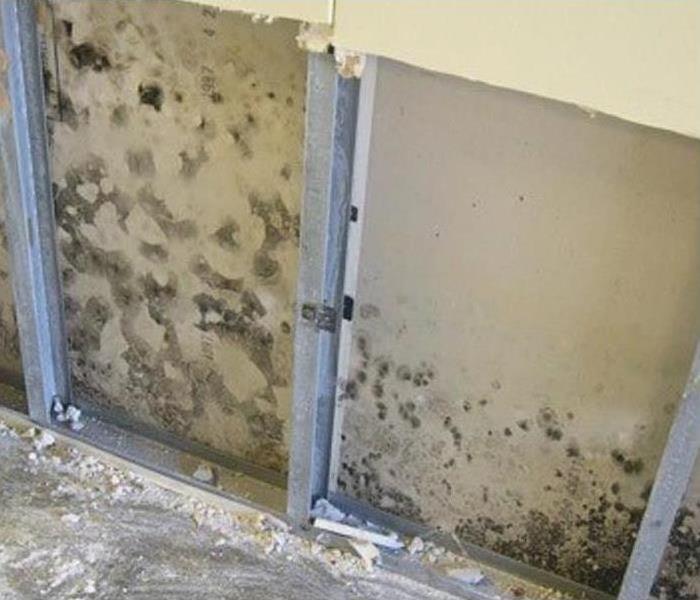How To Identify Mold
12/3/2019 (Permalink)
 Fact: There are thousands of different types of mold out there. Some are harmful while others aren't.
Fact: There are thousands of different types of mold out there. Some are harmful while others aren't.
"What Does Mold Look Like?"
A lot of our customers want to know how to identify mold. First thing to know is that there is active and inactive mold. What does that mean? Well, active mold growth is either slimy or fuzzy. The color of mold is usually green, black, orange or purple. On the other hand, inactive mold is dry and powdery and may be white.
Early stages of mold can look like a fine web, whereas mold in full bloom looks bushy. Mold spores spread real easily, because they are carried by air currents, pets and people. Scary, huh?
“How can I Stop Mold from Spreading in my Home?”
The key is to WORK FAST.
We are at a disadvantage in the south because of our humid climate, but don’t let that hold you back! Mold cannot grow when the humidity and temperature is lowered. If there is a day when the humidity is low, open your windows. If not, use air conditioning and dehumidifiers (empty humidifiers often).
Another way to control mold from spreading is to isolate any moldy objects. Seal moldy trash in plastic bags and remove them immediately. Objects you can save should be dried or frozen ASAP because freezing inactivates mold.
Keep the area clean. Clean surfaces such as shelves and anywhere where valuables are kept. Use a disinfectant such as Lysol, and then use fans only after moldy objects are removed and all display and storage areas are clean.
"How Can I Save Moldy Possessions?"
It is possible to save your things that have been affected by mold.
Air dry them away from other objects. Spread out papers, stand books on end and fan the pages open. Use blotting materials like clean towels or absorbent paper between layers of cloth or paper. Increase air circulation with a fan, but don't aim the fan directly at the objects.
If you can't dry the objects quickly or you have a large quantity, you can freeze books, documents and small textiles until conditions are right to dry them. Do not freeze moldy photographs.
Clean the mold only after it is dry and inactive. Very gently wipe or brush away the mold residue. Work outdoors if possible and always wear protective clothing and a respirator.
Avoid harsh cleaning products and bleach; they can ruin objects. Never vacuum fragile items. Use a household vacuum cleaner outdoors, since the exhaust will spread mold spores.
Be sure display and storage areas are free of mold before you return any clean object to its proper place. Reinspect the objects from time to time for any new mold growth.
Valuable artifacts and photographs should be handled by our professionals here at SERVPRO of Brookhaven, McComb & Columbia.



 24/7 Emergency Service
24/7 Emergency Service